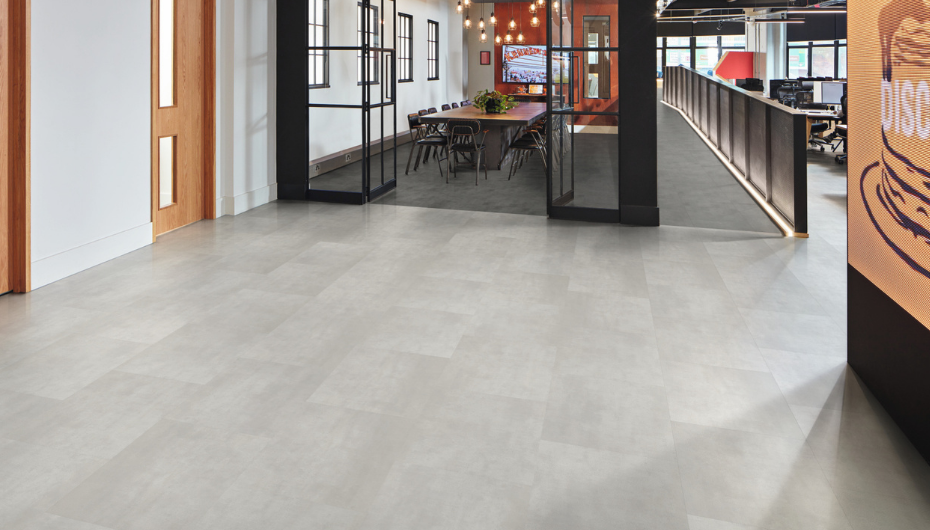Welcome back to our conversation with Stephen Williams of Stephen Williams Associates about the future of office design. In this concluding discussion, Stephen joins us to explore how future workplace designs will consider emerging priorities such as healthy environments, infection control and social distancing, managing noise pollution and the sustainability of materials.
Designflooring: In the first part of our conversation, we looked at the impact of the pandemic on our working practices and how our experiences have altered our attitudes to how and where we work. We have also gained an awareness of our local and global environment. Are you seeing this translated into a concern about the sustainability of designs? With carbon emissions and our use of finite resources now firmly on the agenda, are your clients expecting a more responsible use of materials and looking for manufacturers to be more open and transparent about the environmental impact of their products?
Stephen: Any form of consumption uses valuable resources. Currently production processes are as sustainable as possible but recycling of building materials is certainly one way forward. We review all our projects carefully and, if it is a refurbishment, we try to incorporate many existing features which makes the design more interesting and adds personality.
As designers we conceive our projects in such a way that they will exist for as long as possible, whether a building or an interior, and are flexible to accommodate potential new uses. We prefer to use wood which is a very sustainable material and avoid using aluminium which is energy intensive in its production.
Designflooring: Alongside a slower pace of living and our renewed connection to the environment as a result of numerous lockdowns, we have become more aware of sound, both in nature and in our built environment, and the impact of noise on our mental wellbeing and productivity. Is this being reflected in how businesses are considering how to use their office spaces?
Stephen: Acoustics and sound pollution is something we need to be mindful of in office design. Video conferencing is a trend that has been sparked by the pandemic but is set to continue and this will require the development of more ‘focus rooms’ where people can go to take video meetings without the distractions of an open plan office. I’ve been working with acoustic engineers to explore the camera and sound systems that will be needed to ensure a high quality ‘virtual meeting’ experience.

Designflooring: To encourage employees to return to the office after working from home, many of our customers are telling us that they are keen to promote the health aspects of their workplaces. Are you finding that hygiene aspects have become more prominent in design?
Stephen: Hygiene is a very interesting factor. We are incorporating contactless features into our designs, such as contactless taps in communal bathrooms and automatic facilities such as contactless door opening. However, physical contact is a part of human nature and in the long term cannot be avoided. I believe great spaces; natural light and the correct acoustic attributes are the biggest contribution to healthy offices. The relationship from inside to outside and our connection to the landscape will become more important.
Designflooring: Health and infection control aspects of today’s office life must then also include social distancing? With a trend for more flexible open plan spaces that encourage collaboration and co-working by reducing individual desk spaces, how do you see office designs balancing these needs for interpersonal interactions and adequate provision for personal space and social distancing?
Stephen: There are many tasks during a normal workday for which a desk is not the most suitable workspace. Going forward we will need a varied landscape of typologies to facilitate different working requirements and achieve our full potential, including areas to concentrate, interact with colleagues and hold meetings.
We recommend that businesses rent more than the minimum of space for the allocation of employees to allow space for flexible and creative working. Quantifying how redesigning an office space will benefit the business is quite hard to do in practice but one method we use is to compare the number of sick days taken by employees before and after the redesign. We recently completed a redesign for a shipping company and afterwards the absence rate due to illness halved.
The largest themes for me at the moment are work life balance, job security and affordable housing. Design has a huge influence on creating the living and working environments that are essential to attract generations Y and Z and the workforces of the future.
As Vivienne Westwood recently said, “everything is connected”. We have to really care about the built environment and how it enables us to interact with each other. A society that is inclusive and democratic will be resilient to the themes we have to face over the next years.
Thank you so much to Stephen for taking the time to speak with us. To find out more about his work, visit www.stephenwilliams.com



